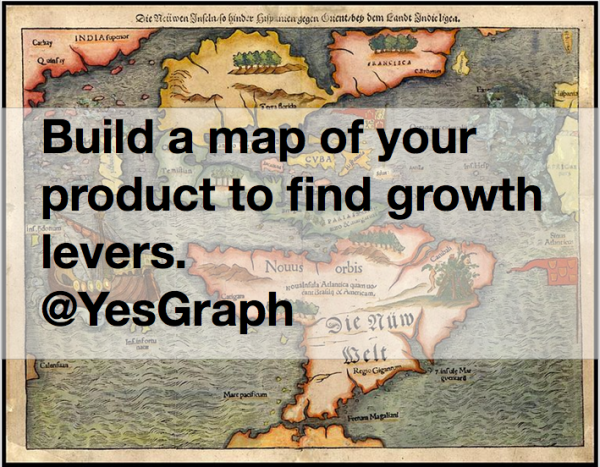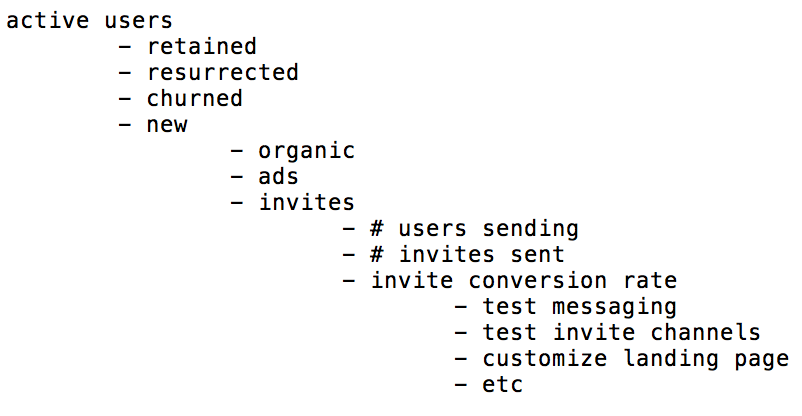This is the second post in a series about how to grow. Click here to subscribe to new posts.
The first step to driving growth is picking a goal. Then you need to understand your product to know which areas might drive growth. It’s about finding your growth levers. You should refine your understanding until you have a clear sense of how any change might affect your metrics.
Guided By Actual User Experience
To start, put yourself in the shoes of a user. What is the very first thing they experience? They might land on your home page. They might get a message from a friend about your product. They might have seen your company covered in the press. Start there, and expand.
List all the places where your product touches the user. Include every page on your site and parts of your mobile app. It is also email, push notifications, SMS, and other messaging channels. Some pages are about communicating what the product does during onboarding, others are part of the product experience.
You can go deeper by making it stateful. Where is the user in their lifecycle, and how does that flavor the experience. Often you have multiple goals for a single page, and representing those constituents is really important. While conversion on a landing page might be direct, most experiences after signup and onboarding have diverse targets. Over time, you’ll build up a better understanding of what specific actions cause a user to activate and be retained. You can then prioritize those features.
Map To Your Goals
Break down your product to understand how each part influences your goal. You can dive down to a microscopic precision here, but many people don’t even get the satellite view.
Let’s walk through an example. Your goal is more active users. That isn’t directly actionable, so what are the components? You have new signups, retained users, churned users, and resurrected users. Every single active user or previously active user belongs to one of those categories.
Now go further. Where do your signups come from? Some from direct visits to your home page, some from invites from current users. Understanding signup source is the first step to improving signups. The same is true for the other categories: how do resurrected users come back?
Back to signups, again go further. Through what channels are invites sent? What are the conversion rates by channel? What is the message? Is that email subject good enough to open the message? Is the body of the email enough to make the invitee click? Does customizing the landing page improve conversion?
Finally you have something actionable. You can run a test on the email subject and body to see how it affects clicks, and then invite conversion, and then signups, and then active users. You’ve broken down a part of your product from an abstract goal to something actionable.
Think of it like an expanding tree of detail. Here is one pass, but you want to expand on everything:
Now do this for everything, not just from the goals down but from the user experience up.
Include Uncharted Territory
The main challenge with this approach is that you focus on what is already there, but there is more to the story. You need to get creative and consider uncharted territory, things which you could be doing but aren’t. In the example above, you might be running a test on your initial invite. Are you sending a reminder? Do you reflect the status to the sender, asking them ping their friend directly? Do you use email when SMS might be more appropriate for your product? A good understanding of your product’s surface area should consider what isn’t there as much as what is.
Interestingly, when designers come up with possible implementations, they often have very different approaches. Too many times, I’ve seen these designs considered, filtered to pick one, and later on the product team is not sure what else to try. You already had variants, now just use them.
Too Much To Explore
It should be obvious once you break down your product that there is far more to improve upon than you can possibly do. If you’re running out of ideas, it means that you haven’t thought deeply enough about what you have and what it could be. The challenge becomes deciding on what to work on next. That is the topic of Step 3 in this series.



